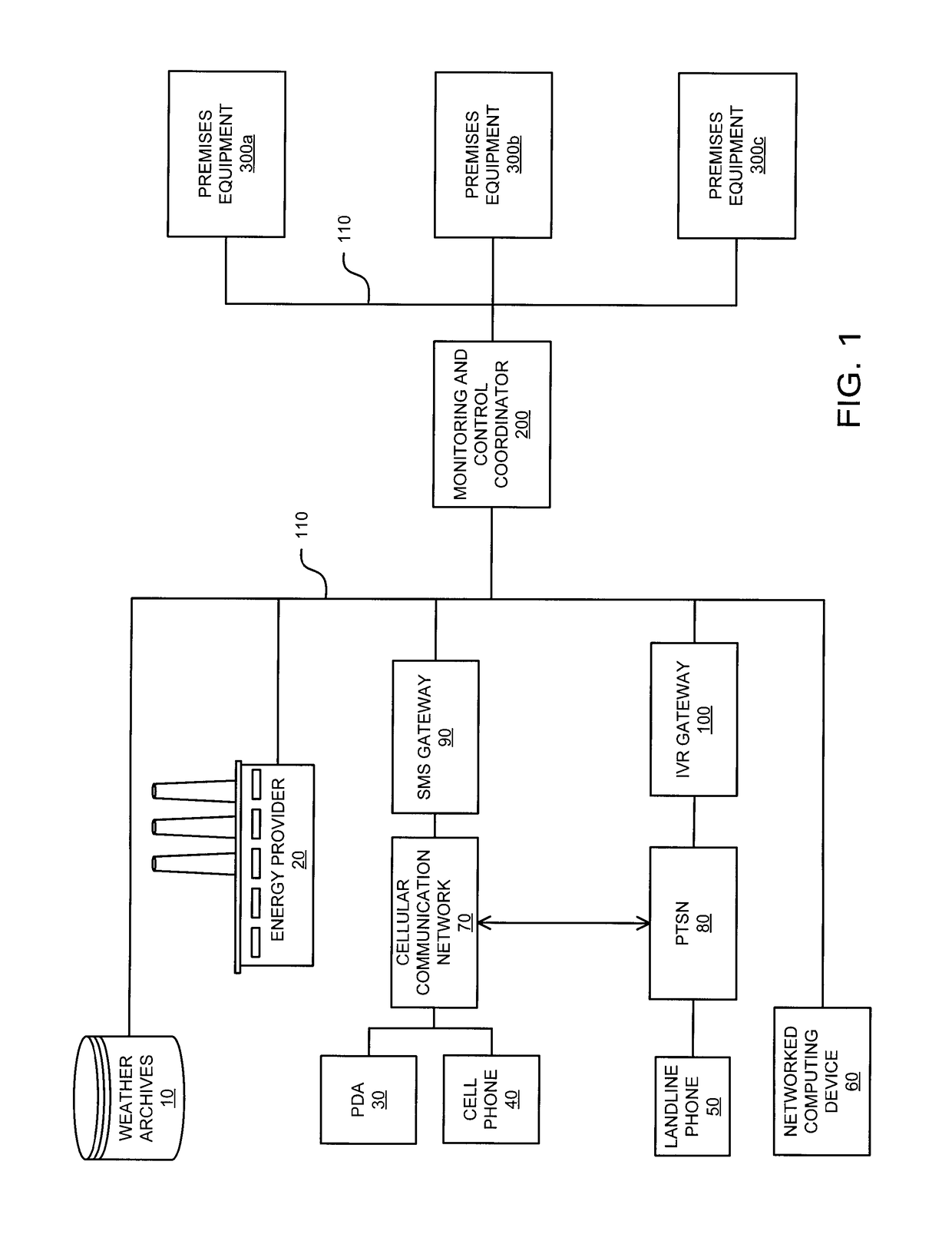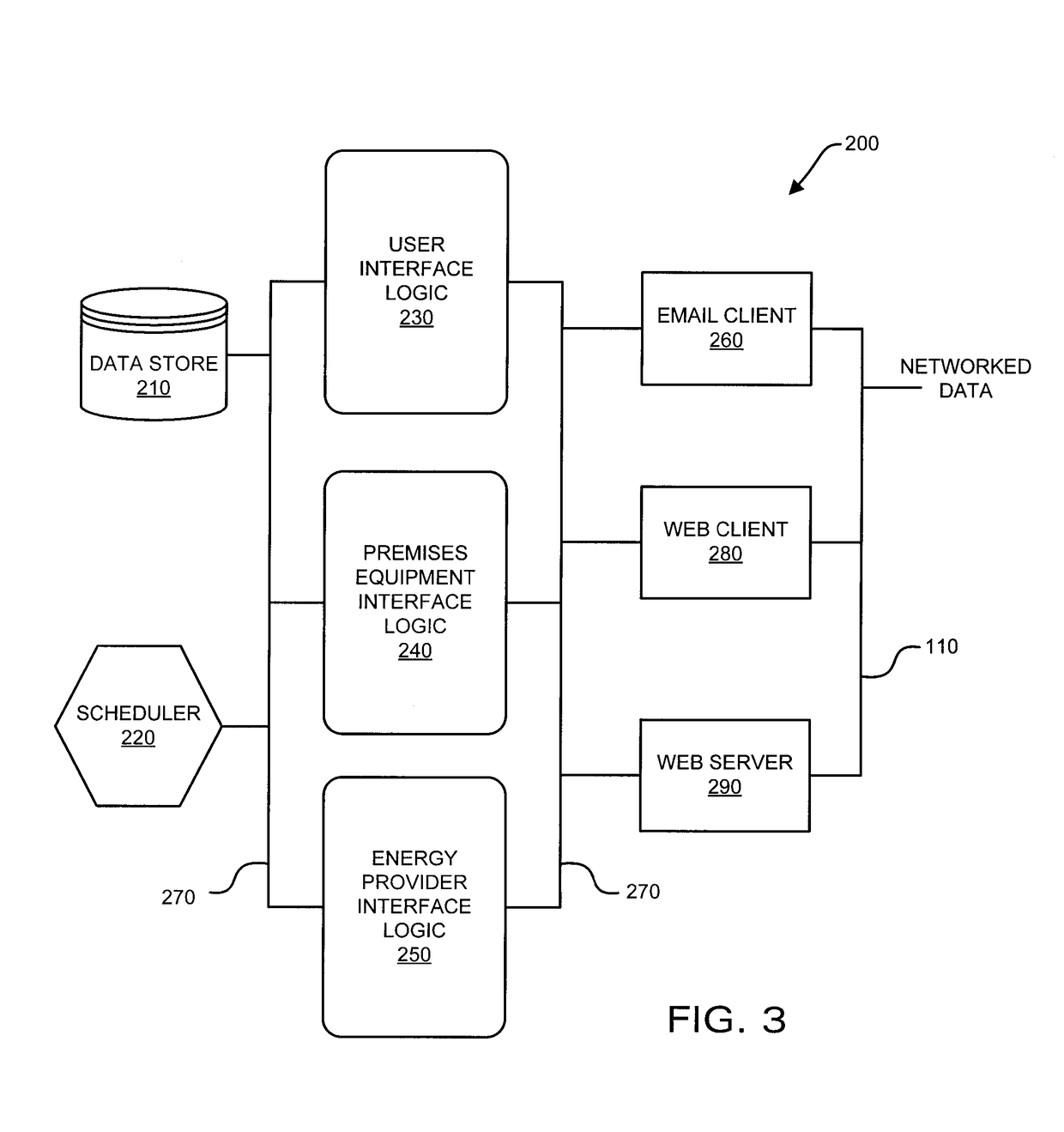Interconnected premises equipment for energy management
a technology of energy management and interconnection, applied in the direction of electric devices, process and machine control, instruments, etc., can solve the problems of limiting the remote control capabilities of devices, unable to monitor or measure the amount of energy consumed by the vast majority of energy-consuming appliances, and providing local control of appliances
- Summary
- Abstract
- Description
- Claims
- Application Information
AI Technical Summary
Benefits of technology
Problems solved by technology
Method used
Image
Examples
Embodiment Construction
[0025]The present invention forms a network of interconnected energy-consuming appliances within individual premises to control the consumption of an energy commodity either locally at the appliance or remotely using standard devices with which a consumer already has access and familiarity, such as a web browser or a cell phone. As used herein, an “energy commodity” is a consumable product provided to premises by an energy provider to operate energy-consuming equipment on the premises in exchange for payment of a market price. Such energy commodities include electric power, as provided over a power grid, natural gas, as provided through a pipeline, and others. It is to be understood that energy commodities may be stored locally to the premises, such as through gas tanks and storage batteries. Automated control of consumption of the energy commodity may occur in accordance with expressed preferences and schedule of the consumer, in accordance with requirements of the provider of the ...
PUM
 Login to View More
Login to View More Abstract
Description
Claims
Application Information
 Login to View More
Login to View More - R&D
- Intellectual Property
- Life Sciences
- Materials
- Tech Scout
- Unparalleled Data Quality
- Higher Quality Content
- 60% Fewer Hallucinations
Browse by: Latest US Patents, China's latest patents, Technical Efficacy Thesaurus, Application Domain, Technology Topic, Popular Technical Reports.
© 2025 PatSnap. All rights reserved.Legal|Privacy policy|Modern Slavery Act Transparency Statement|Sitemap|About US| Contact US: help@patsnap.com



